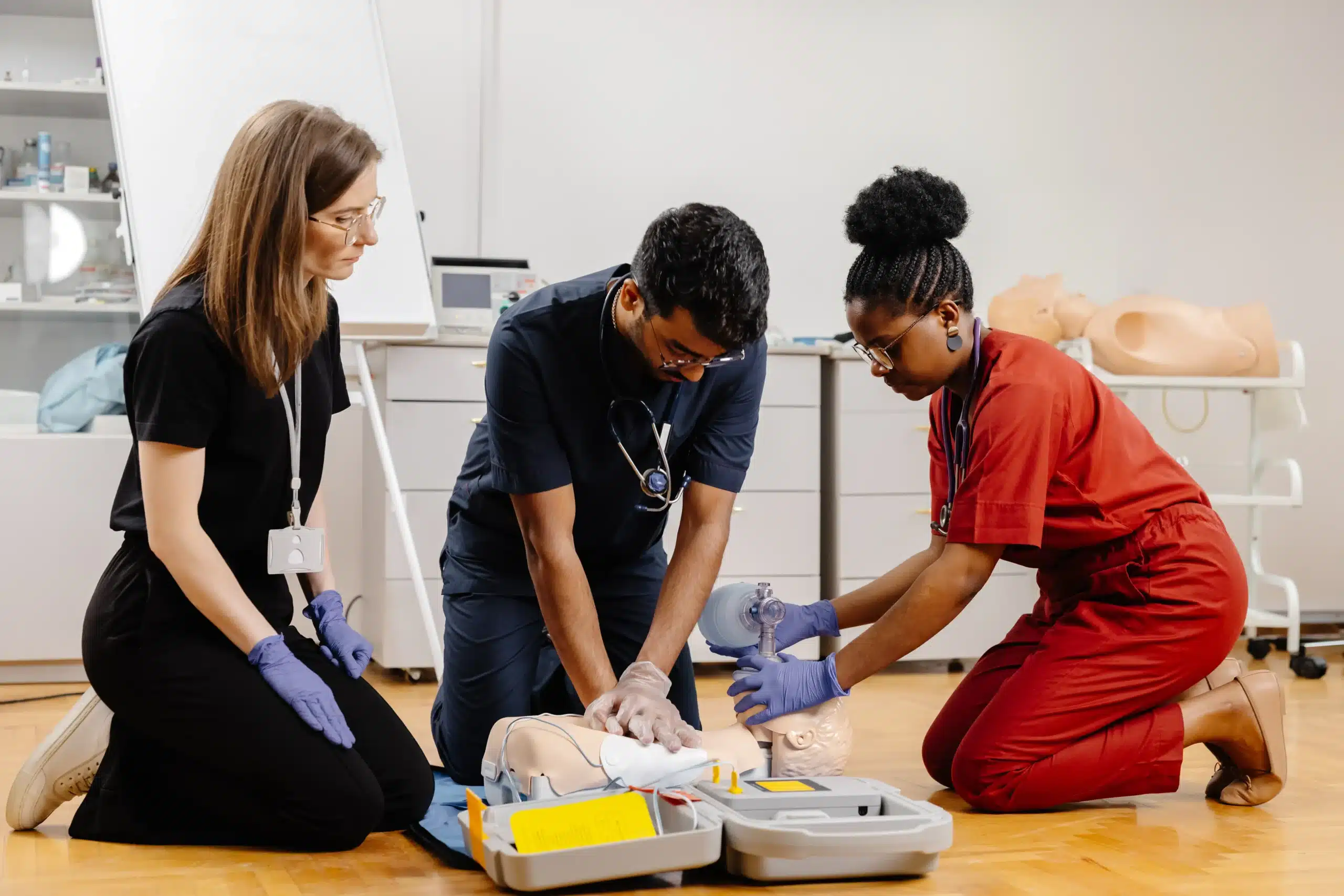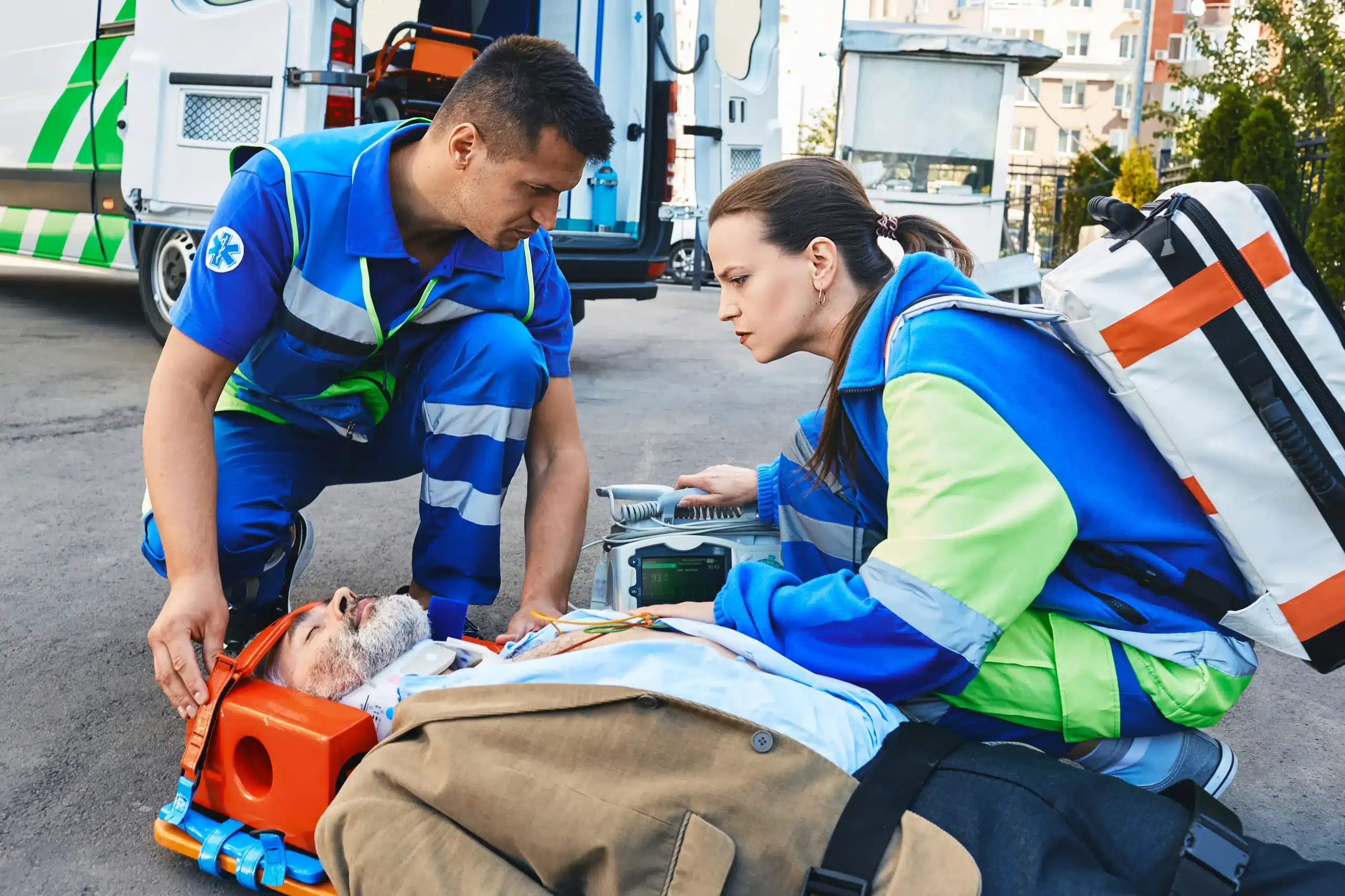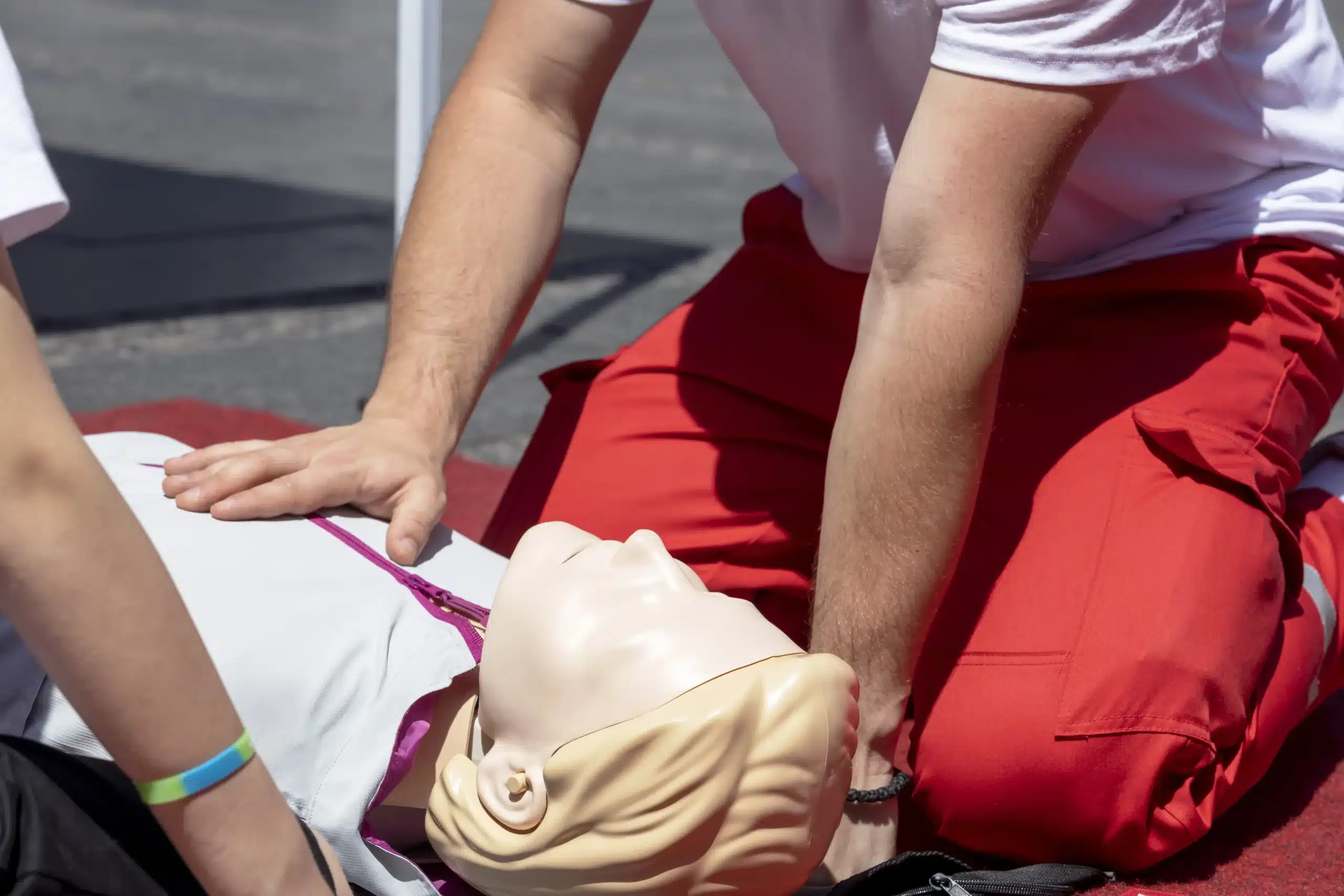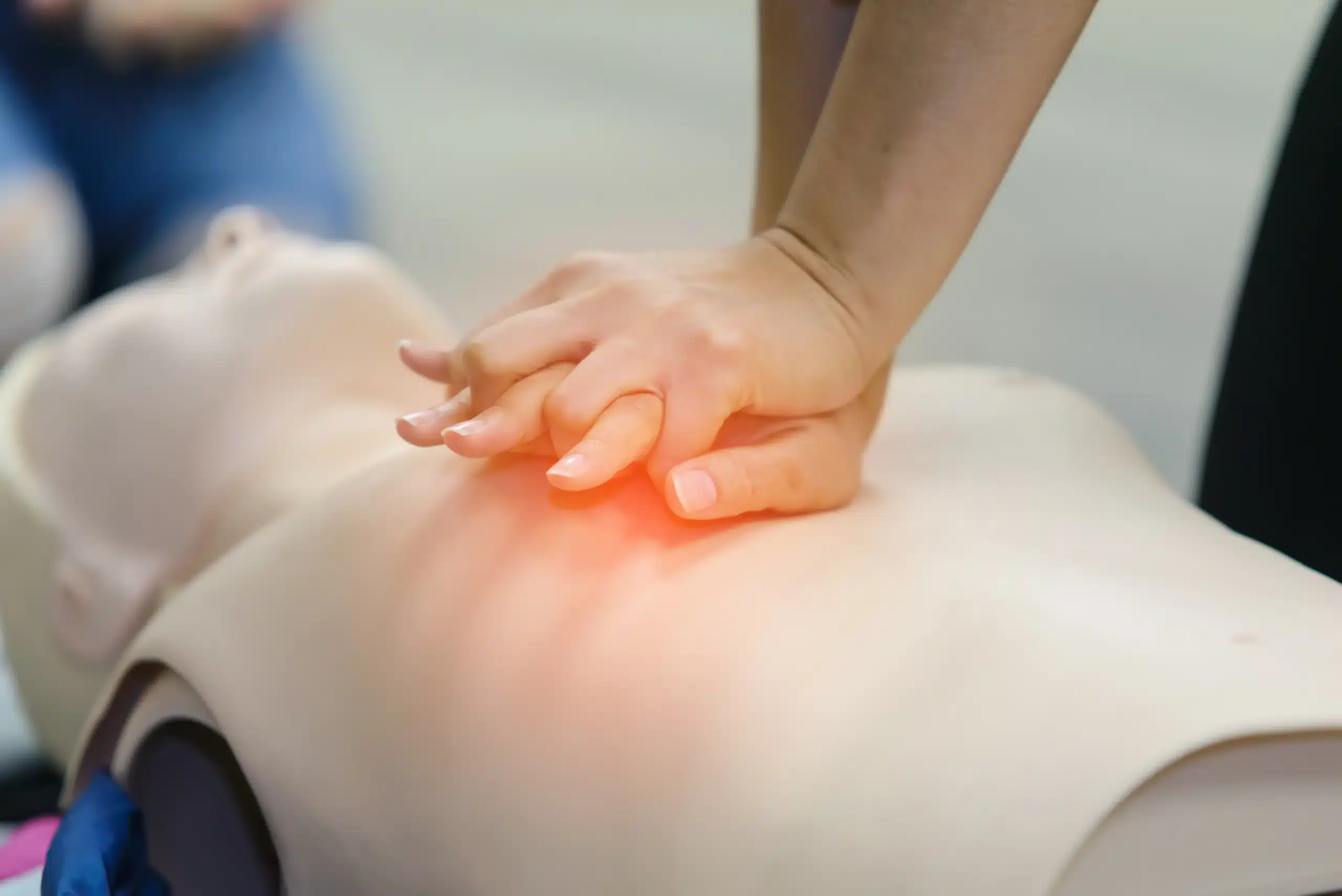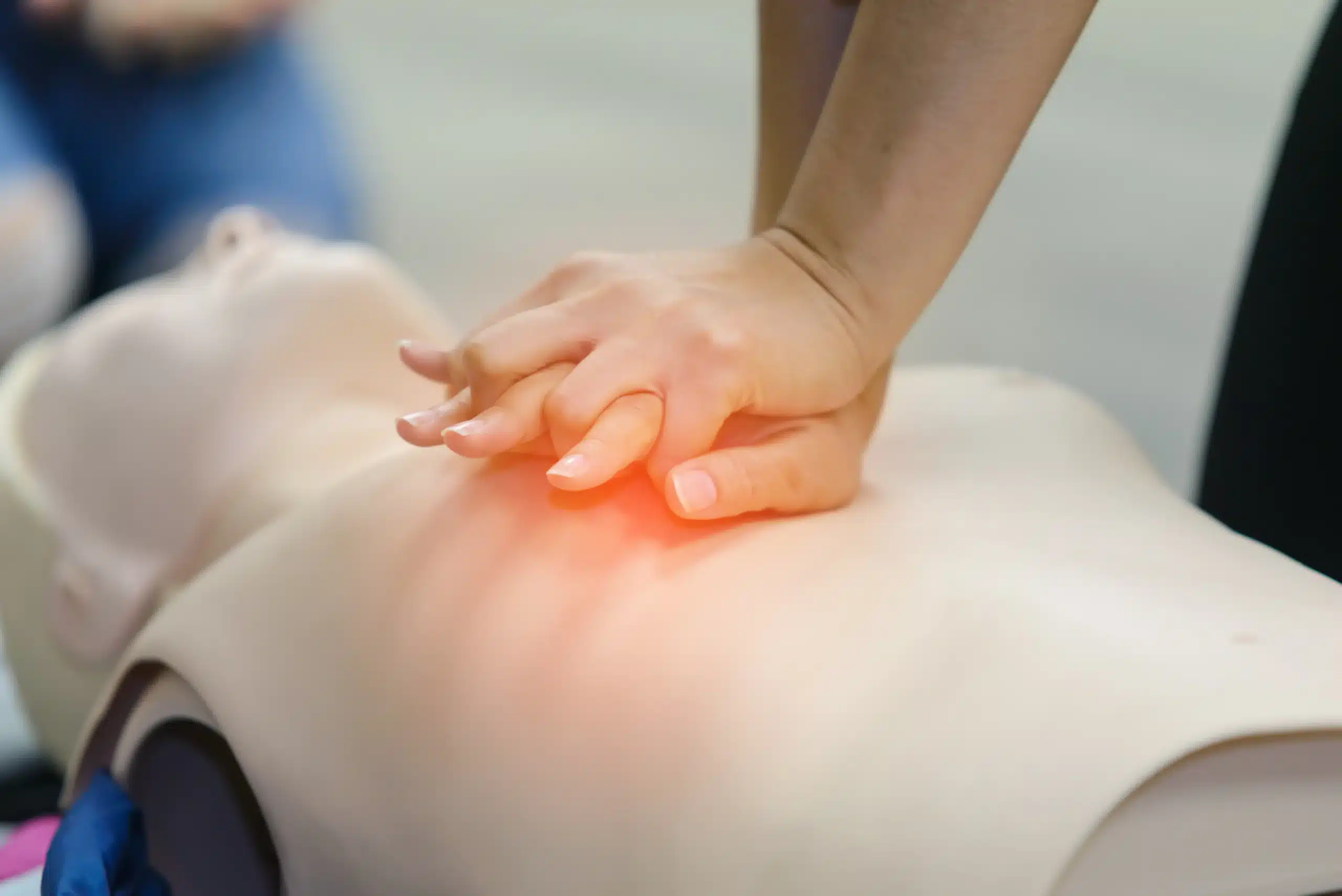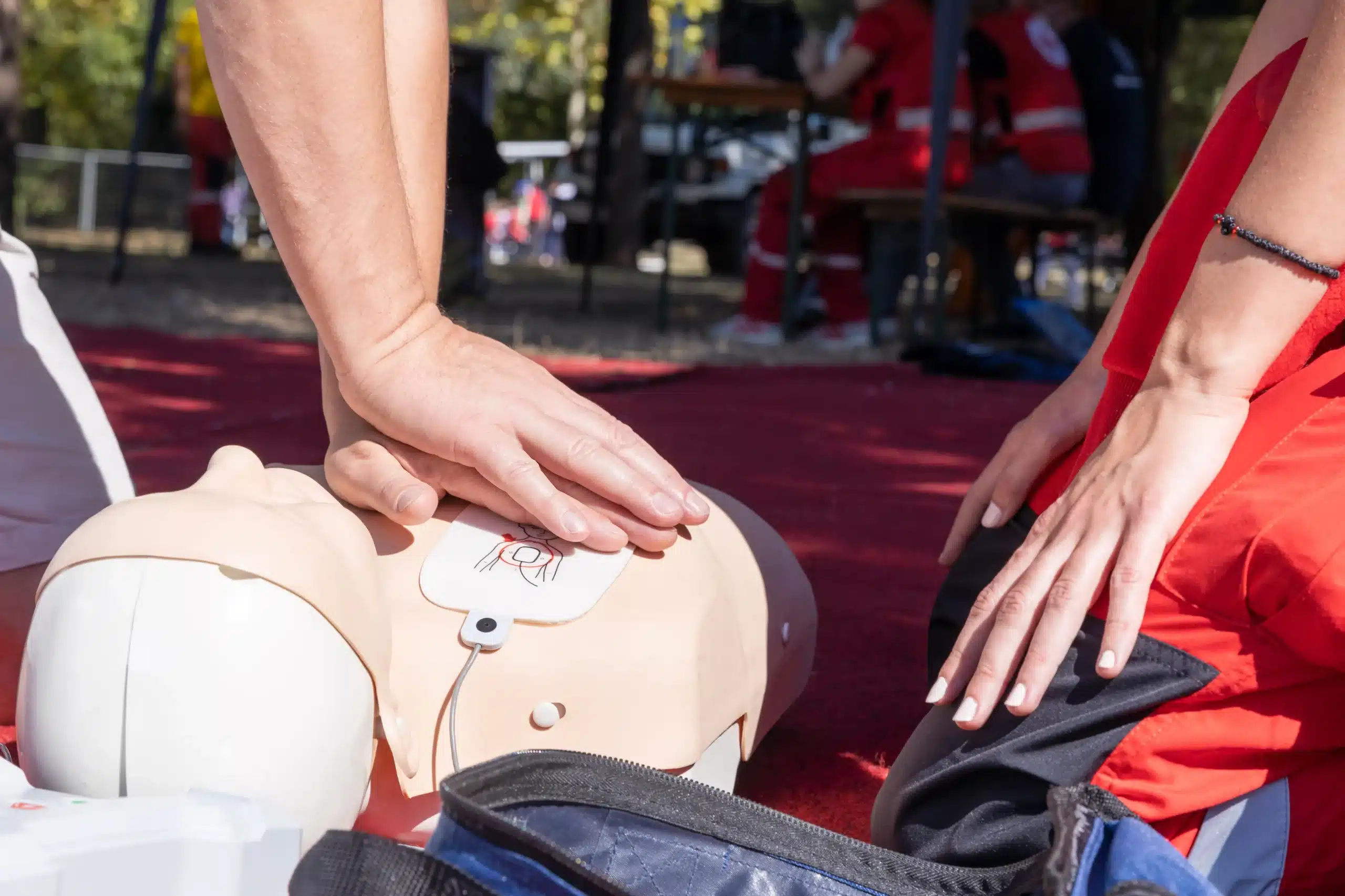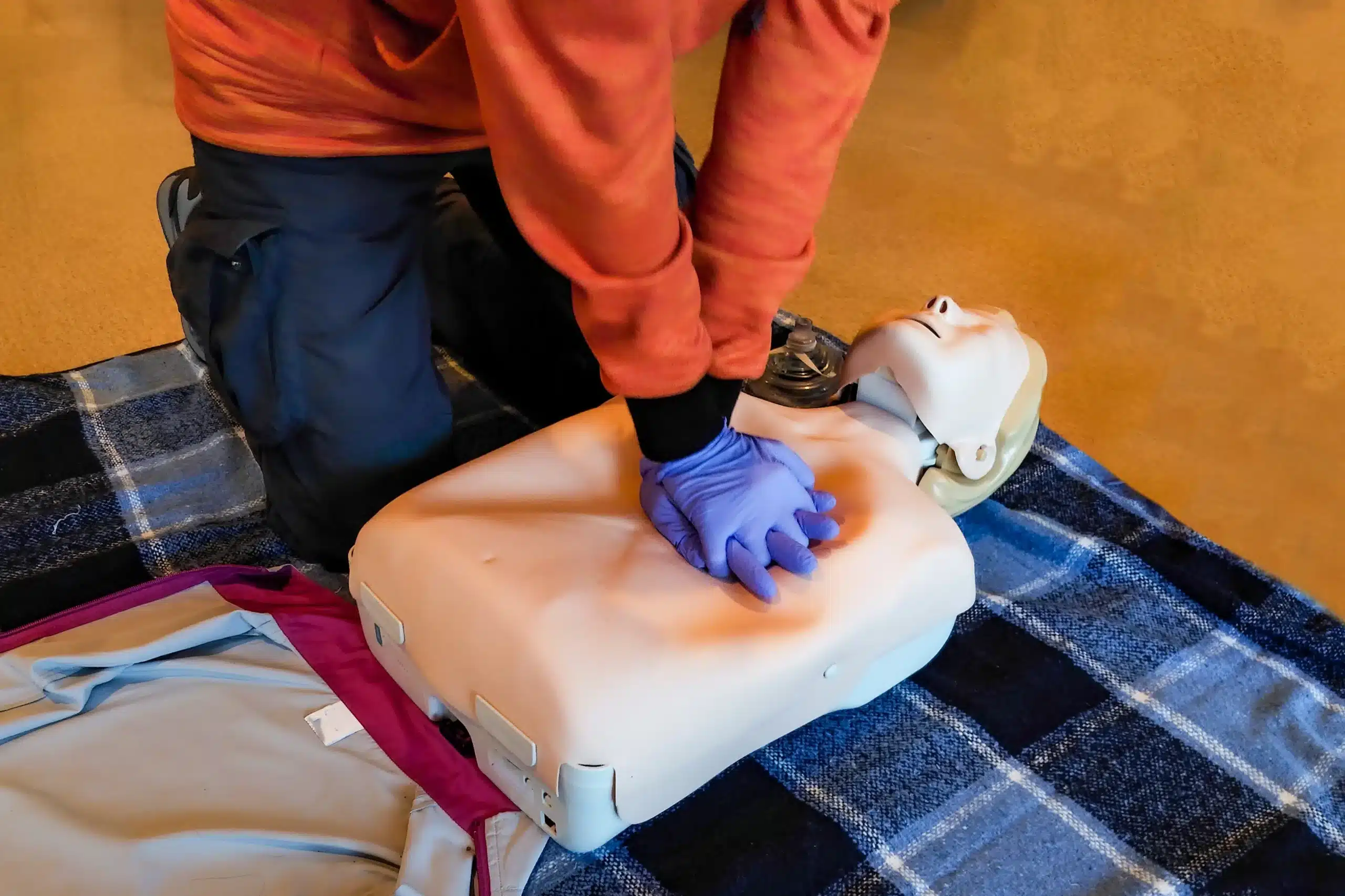Life’s unpredictable. Emergencies happen. Are you ready to respond? CPR recertification is more than just a formality; it’s a commitment to being prepared for the unexpected. This comprehensive guide walks you through the process of renewing your CPR certification, including finding convenient options for “CPR recertification near me.” We’ll explore the benefits of staying current with your training, the different recertification pathways available, and how to choose the best course for your needs. Let’s ensure you have the confidence and skills to make a difference when it matters most.
Key Takeaways
- Regular CPR recertification keeps your skills sharp and your confidence high. Refresher courses help you retain crucial knowledge and techniques, ensuring you’re ready to respond effectively in an emergency. Choose a recognized provider like the American Heart Association or American Red Cross.
- Find a CPR recertification course that fits your lifestyle. In-person, online, and blended learning options offer flexibility for various schedules and preferences. Consider course content, instructor experience, and certification validity when selecting a program.
- Stay prepared between recertifications. Reviewing course materials, practicing CPR techniques, and staying informed about guideline updates helps maintain your skills and ensures you’re always ready to help.
Why CPR Recertification Matters
Knowing CPR can be the difference between life and death. It empowers you to respond effectively during medical emergencies like heart attacks, near-drowning incidents, or choking episodes. But like any skill, CPR proficiency fades over time. That’s why CPR recertification is so important. It’s not just about maintaining a credential—it’s about ensuring you’re truly prepared to save a life.
Think about it: in a high-pressure emergency, you need to recall and apply your training instantly. Recertification courses reinforce those crucial skills, boosting your confidence and reducing the risk of hesitation. Studies show that skills decay significantly within a year of initial training, with less than half of participants passing a skills test after this period. Regular refresher courses bridge that gap, keeping your knowledge and abilities sharp. This ensures you can act quickly and effectively when every second counts.
Beyond individual preparedness, CPR recertification also demonstrates your commitment to maintaining high standards of care. Whether you’re a healthcare professional, a childcare provider, or simply someone who wants to be prepared, recertification validates your training and reassures those around you. When choosing a program, look for reputable providers like the American Heart Association or the American Red Cross to ensure your certification is valid and respected. This not only ensures you receive quality training but also enhances the credibility of your certification. In an emergency, you want to be confident that your training is up-to-date and effective.
How Often Should You Renew Your CPR Certification?
Knowing when to renew your CPR certification is key to staying prepared for emergencies. Generally, CPR certifications are valid for two years. This timeframe helps you maintain a solid grasp of life-saving techniques and ensures you’re up-to-date on the latest guidelines. It’s important to renew your CPR certification before it expires to avoid any gaps in your qualification.
While the two-year standard is common, always double-check the specific renewal requirements of your certifying organization. Some organizations may have slightly different timelines or renewal processes. Workplace requirements might also mandate more frequent renewals, especially in healthcare settings. Staying informed about these details will help you maintain your certification without interruption and meet any professional obligations. If you’re looking for recertification options, consider exploring the RQI program for a flexible and convenient approach to maintaining your skills. For affordable options, check out our low price guarantee and group discounts.
CPR Recertification Courses
When your CPR certification is about to expire, you’ll need to find a recertification course. Several options are available, each with its own pros and cons. Understanding these differences can help you choose the best fit for your schedule, learning style, and budget.
In-Person Training
In-person CPR recertification provides hands-on practice and direct feedback from a certified instructor. This format allows you to ask questions, work with training equipment, and practice your skills in a controlled environment. Many students find this immersive experience invaluable for building confidence and mastering CPR techniques. While in-person training at locations like Palo Alto CPR Classes offers a high level of interaction, it often comes with a higher price tag than online options. Scheduling can also be a challenge, as you’ll need to find a class that fits your availability.
Online Options
Online CPR recertification courses offer flexibility and convenience. You can complete the coursework at your own pace, anytime, anywhere. This format is particularly helpful for those with busy schedules or limited access to in-person training centers. However, online courses typically lack the hands-on practice component of in-person training. While some online programs incorporate videos and interactive simulations, they don’t fully replicate the experience of working with a physical manikin. It’s crucial to ensure your online CPR certification comes from a reputable organization like the American Heart Association (AHA) or the American Red Cross to guarantee its validity.
Blended Learning
Blended learning combines online coursework and in-person skills practice. This format allows you to complete the theoretical portion of the training online at your own speed, then attend a shorter in-person session to demonstrate your skills and receive instructor feedback. Blended learning offers more flexibility than traditional in-person classes while still providing the hands-on experience many students find beneficial. However, it’s important to consider whether you thrive in a self-directed learning environment. Some individuals may find it challenging to complete the online modules without the structure and accountability of a traditional classroom setting. This type of learning, while convenient, isn’t the right fit for everyone.
Find CPR Recertification Near You
Locating a convenient and reputable CPR recertification course is easier than you think. Several established organizations and local providers offer a variety of training programs. Here’s a breakdown of where to look:
American Heart Association (AHA) Courses
The American Heart Association offers a range of CPR recertification courses through its training centers. Choosing an AHA-authorized training center ensures you receive high-quality instruction aligned with the latest guidelines. Many hospitals and healthcare systems offer AHA-authorized courses, making them convenient for healthcare professionals. You can easily find a nearby AHA training center through their website. AHA courses often cover BLS, ACLS, PALS, and other advanced life support certifications. Palo Alto CPR Classes offers AHA-certified courses, including BLS and ACLS. For comprehensive training and adherence to the latest standards, an AHA course is a solid choice.
American Red Cross Programs
The American Red Cross is another respected provider of CPR recertification courses. They offer a streamlined renewal process, often shorter than initial CPR training, focusing on refreshing essential skills and updating your certification. The Red Cross has numerous training locations, making it accessible across the country. Their website provides a handy search tool to find classes near you.
Local Training Centers
Beyond national organizations, many local training centers specialize in CPR recertification. These centers often provide flexible scheduling options, including weekend and evening classes, ideal for busy professionals. Texas Heart CPR Training, for example, offers CPR renewal classes using various teaching methods, including AHA videos, verbal instruction, printed materials, and hands-on practice. When considering a local training center, check if they use nationally recognized guidelines, such as those from the AHA or Red Cross, to ensure your certification’s quality and validity.
Community Organizations
Community organizations like fire departments, community colleges, and recreation centers frequently offer CPR recertification courses. These classes are often more affordable and conveniently located within the community. When choosing a community organization, research the provider’s credibility and accreditation to ensure the training meets industry standards. Consider factors like instructor qualifications and the curriculum’s alignment with established guidelines. A well-structured program from a reputable community organization can be a valuable and cost-effective way to maintain your CPR skills. For guidance, check out this helpful resource on finding the right CPR recertification training.
Choose the Right CPR Recertification Course
Picking the right CPR recertification course is key to staying sharp and confident in your skills. Here’s what to consider:
Evaluate Course Content
First, think about what you need from a recertification course. Do you want a basic refresher or a deep dive into advanced techniques? Look for courses that align with the latest AHA guidelines so you’re up-to-date on best practices. For example, if you’re a healthcare provider, ensure your course covers infant, child, and adult CPR. Palo Alto CPR Classes offers a range of courses, including BLS for healthcare providers.
Assess Instructor Qualifications
Experienced, certified instructors make a big difference. They can offer personalized feedback and create a comfortable learning environment. Check if the instructors are certified by a reputable organization, like the American Heart Association. Their expertise will give you the confidence to handle real-life emergencies. Our instructors at Palo Alto CPR Classes are highly experienced and certified, ensuring you receive top-notch training.
Consider Your Learning Style and Schedule
Think about how you learn best. Do you prefer hands-on, in-person instruction, or does the flexibility of online learning suit you better? Many providers offer blended learning options that combine online modules with in-person skills sessions. Choose a format that fits your schedule and learning preferences. If you have a busy schedule, an online or blended learning option might be more convenient. Contact us to discuss the best learning format for you.
Verify Certification Validity
Before you sign up, double-check that the course and certification are recognized by your employer and any relevant licensing boards. For instance, many healthcare professionals need certification from the American Heart Association. Ensure the provider is accredited by a recognized organization to guarantee your certification is valid. This is especially important if you need CPR certification for your job. Palo Alto CPR Classes offers AHA-certified courses through the RQI program, ensuring your certification meets professional standards.
What to Expect During CPR Recertification
CPR recertification is a refresher course designed to keep your life-saving skills sharp. It covers core concepts and techniques, ensuring you’re prepared to respond effectively in an emergency. Here’s a glimpse of what you can expect:
Course Duration and Structure
Recertification courses are generally shorter than initial CPR training. Expect a time commitment of a few hours, whether you choose in-person or blended learning. Online-only recertification courses offer more flexibility, allowing you to learn at your own pace and complete the coursework when it’s convenient. Some providers, like Palo Alto CPR Classes, offer the RQI program for convenient skills checks. For those seeking in-person training, daily classes are available in over 60 cities.
Skills Assessment and Hands-On Practice
Most in-person and blended learning CPR recertification courses include a skills test. This practical component lets you demonstrate your proficiency in CPR techniques under the guidance of a certified instructor. While online CPR certifications are a valid option, make sure they come from reputable organizations like the American Heart Association (AHA) or the American Red Cross. This ensures you receive high-quality training that meets industry standards. For example, all courses offered by Palo Alto CPR Classes come with AHA certification. They also offer a low price guarantee, making quality training accessible.
Updated Guidelines and Techniques
CPR guidelines are periodically updated to reflect the latest scientific research and best practices. Participating in a recertification course ensures your skills are current. You’ll learn the most effective techniques for providing aid during cardiac arrest and other emergencies. These updates, when incorporated into training programs, contribute to improved quality of care and increased survival rates. For those looking for training options, Palo Alto CPR classes offers various courses, including ACLS and CPR for groups at discounted rates.
CPR Recertification Costs
CPR recertification is an investment in your skills and the safety of others. Understanding the costs involved helps you budget effectively and find the best training program for your needs.
Factors Affecting Prices
Several factors influence CPR recertification costs. The type of course you take, such as BLS, ACLS, or PALS, plays a significant role. More advanced courses typically have a higher price tag because of the specialized knowledge and skills they cover. The training provider also matters. Established organizations like the American Heart Association often have standardized pricing, while independent instructors or smaller training centers may offer more competitive rates. Location can also affect cost, with courses in metropolitan areas sometimes being more expensive. Generally, CPR recertification ranges from $50 to $150 or more. This usually covers training materials, instructor fees, and certification fees. At Palo Alto CPR Classes, we strive to offer competitive pricing on all our courses, including BLS and ACLS.
Discounts and Promotions
Look for discounts and promotions to save on your recertification. Many providers, including the American Red Cross, offer seasonal discounts or promotional codes. Check their websites or subscribe to their newsletters for updates on current offers. You might find additional discounts through professional organizations or employers. Some organizations offer group discounts, a great option if you’re recertifying with colleagues. At Palo Alto CPR Classes, we offer discounts for group classes, making it more affordable to train your entire team.
Group Rates and Financial Assistance
If you’re handling CPR recertification for a group, like your workplace or a community organization, ask about group rates. Many training providers offer discounted pricing for larger groups. This can be a cost-effective way to ensure everyone stays current on their certifications. Some organizations may also offer financial assistance programs or payment plans. Contact training providers directly to discuss your needs and explore available options. At Palo Alto CPR Classes, we’re happy to work with you to find the best solution for your group training needs. We understand the importance of keeping your team certified and prepared for emergencies.
Prepare for Your CPR Recertification
Getting ready for your CPR recertification involves a few key steps. Think of it as preparing for any important test or refresher course. A little prep work goes a long way!
Review Previous Materials
Before your recertification class, take some time to review the materials from your initial CPR training. This will refresh your memory on essential concepts and techniques. If you’ve kept your old textbook or any handouts, flip through them. Even a quick overview can make a big difference in how easily you grasp the updated information. When choosing a program, make sure the provider is credible and accredited. This ensures your training meets current industry standards and best practices. Safety Training Seminars offers American Heart Association certification through their RQI program, guaranteeing you receive high-quality, recognized training. Plus, whether you prefer online or in-person learning, studies show that students learn CPR equally well in both formats, so choose the style that suits you best.
Gather Necessary Equipment
While most CPR recertification courses provide the necessary equipment during training, it’s a good idea to check with your chosen provider about anything specific you might need. Understanding the costs associated with recertification is also important. CPR recertification typically ranges from $50 to $150 or more, covering training materials, instructor fees, and certification. Knowing this in advance helps you budget accordingly. If you’re looking for affordable options, check out Palo Alto CPR Classes’ Low Price Guarantee. They offer competitive pricing and even group discounts, making quality training accessible. Online courses can also be a great option, offering flexibility and accessibility, especially if you’re in a remote area or have a busy schedule.
Mental and Physical Readiness
CPR recertification involves physical activity, so ensure you’re physically prepared. If you have any concerns about your physical abilities, discuss them with your instructor beforehand. They can offer modifications or guidance to ensure your comfortable participation. Just as important is your mental preparedness. It’s normal to feel a little apprehensive, especially if it’s been a while since your last training. Remember that the instructors are there to support you. Focus on the importance of CPR and how these skills can save lives. This positive mindset can boost your confidence and make the learning process more effective. If you find yourself struggling with any aspect of the course, don’t hesitate to reach out. Many training providers offer additional support and remediation sessions to help you master the skills. Knowing this support is available can ease any anxiety and help you feel more prepared.
Top CPR Recertification Providers
Finding the right CPR recertification provider is key to maintaining your skills and confidence. Here are a few reputable organizations and training centers to consider:
American Heart Association
The American Heart Association (AHA) offers CPR training courses that follow the latest guidelines and best practices. Choosing an AHA-authorized training center ensures high-quality instruction and a recognized certification. Many healthcare professionals rely on AHA certifications for their careers. For those seeking BLS certification or ACLS training, the AHA is an excellent resource.
American Red Cross
The American Red Cross provides comprehensive CPR recertification courses designed to refresh your skills. These renewal courses are generally shorter than initial training, making them convenient for busy schedules. They also offer a variety of first aid and safety training options.
National Safety Council
The National Safety Council (NSC) is known for its high-quality CPR training programs. They offer a range of courses to meet different needs, from basic CPR to more advanced certifications. The NSC also provides resources for workplace safety and injury prevention.
ProTrainings
ProTrainings offers various CPR and first aid training courses for individuals and organizations. Their focus on convenience and accessibility makes getting certified or recertified straightforward. They offer online, in-person, and blended learning options.
American Safety & Health Institute (ASHI)
The American Safety & Health Institute (ASHI) provides CPR and first aid training programs that comply with OSHA and other regulatory standards. You can find ASHI training that meets industry requirements and keeps your knowledge current. They offer a variety of courses for different industries and professions.
Palo Alto CPR Classes
Palo Alto CPR Classes offers hands-on training and certification in CPR and first aid, tailored to the local community and various professional needs. They serve Palo Alto, Redwood City, and Menlo Park, CA. They offer group discounts and a low price guarantee. For those interested in the RQI program, they also offer convenient RQI classes.
Maintain CPR Skills Between Recertifications
It’s great that you’re committed to maintaining your CPR skills! Your certification is a crucial first step, but staying sharp on your techniques and knowledge between recertifications is key to confidently responding in an emergency. Here’s how:
Practice Techniques
Think of CPR skills like any other skill—consistent practice keeps them fresh. Studies show that CPR skills can fade quickly, with less than half of participants passing a skills test just one year after initial training. Regularly reviewing the steps and practicing chest compressions and rescue breaths (on a manikin, of course!) can make a real difference in your preparedness. Even quick refreshers can significantly improve your muscle memory and reaction time. In-person training offers the best hands-on practice and real-time feedback from instructors, so consider supplementing your online learning with occasional in-person practice sessions to solidify your skills.
Stay Informed About Guideline Updates
CPR guidelines are constantly evolving as medical research advances. Staying up-to-date on these changes is essential for providing the most effective care. The American Heart Association regularly publishes updated guidelines and educational resources to improve CPR training and outcomes. Make it a habit to check for updates periodically, especially before your recertification is due. This proactive approach ensures you’re always aligned with the latest best practices and can confidently administer CPR in any situation. You can also sign up for email alerts from organizations like the AHA or the Red Cross to receive notifications about guideline changes and new training resources. This way, you’ll always be in the know and ready to provide the best possible care.
Related Articles
- CPR Renewal in Menlo Park: Your Guide – Palo Alto CPR Classes
- Why CPR is Crucial in Healthcare
- CPR Certification in Palo Alto: Your Guide – Palo Alto CPR Classes
- BLS Renewal in Palo Alto: Your Easy Guide – Palo Alto CPR Classes
- CPR Classes in Redwood City: Your Complete Guide – Palo Alto CPR Classes
Frequently Asked Questions
Why is CPR recertification so important? CPR skills decline over time. Recertification reinforces these skills, ensuring you’re prepared to act quickly and effectively in a real emergency. It also validates your training and demonstrates your commitment to high standards of care. Regularly refreshing your knowledge and skills helps bridge the gap between initial training and real-world application, ultimately increasing the chances of positive outcomes during emergencies.
How can I find a CPR recertification course near me? Several options are available for finding a course. The American Heart Association and the American Red Cross have websites that allow you to search for training centers in your area. Local training centers, community organizations (like fire departments or community colleges), and even some workplaces offer recertification courses. Look for providers that use nationally recognized guidelines, such as those from the AHA or Red Cross, to ensure your certification’s quality.
What’s the difference between in-person, online, and blended learning CPR recertification? In-person classes offer hands-on practice and direct interaction with an instructor. Online courses provide flexibility and convenience, allowing you to learn at your own pace. Blended learning combines online coursework with in-person skills practice, offering a balance of flexibility and hands-on training. The best option depends on your learning style, schedule, and budget.
How much does CPR recertification cost, and are there any discounts available? The cost varies depending on the course type, training provider, and your location. Expect to pay somewhere between $50 and $150, sometimes more for advanced certifications. Many providers offer discounts for groups, students, or returning customers. Check with your chosen provider for specific pricing and any available discounts. Some employers may also cover the cost of recertification for their employees.
What can I do to maintain my CPR skills between recertifications? Regularly reviewing your training materials, even briefly, can help keep the information fresh in your mind. Practicing the techniques, such as chest compressions and rescue breaths on a manikin, can reinforce muscle memory and improve your response time in a real emergency. Staying informed about updates to CPR guidelines is also crucial, as best practices can change based on the latest research.
